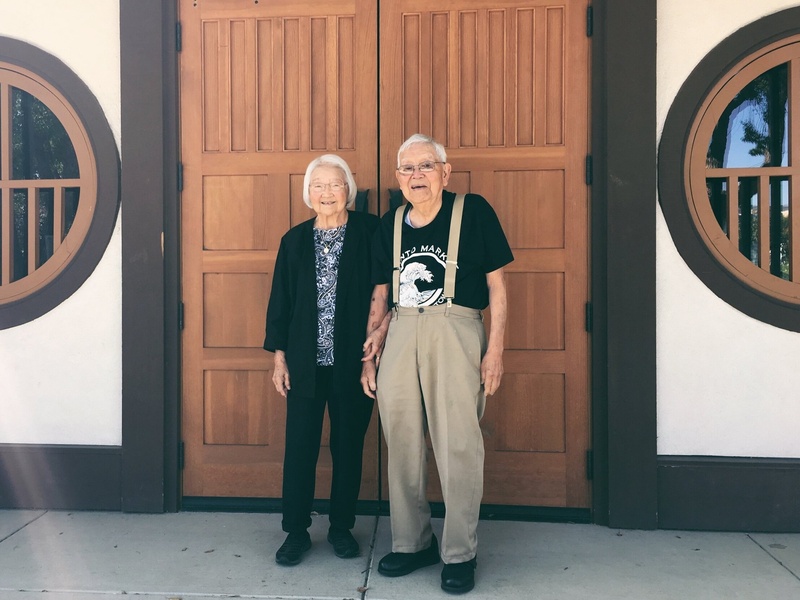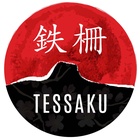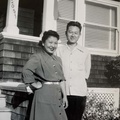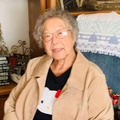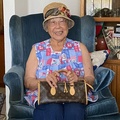Any visit to the quaint neighborhood of San Jose’s Japantown often necessitates that you visit at least one of three institutions: the manju shop Shuei-Do, family favorite restaurant Gombei, and Santo Market. Serving the community since 1946, Santo Market is a haven of fresh poke, Asian produce and meats, and their legendary (and quickly sold out) strawberry mochi, where they nestle one huge, ripe strawberry in the middle of sweet red bean.
Behind the store’s longstanding legacy are Earl and Helen Santo, who have kept it a family business since Earl’s uncle began it immediately following the end of the war. Seeing a growing need to serve the resettling Japanese American population, he sought to stock the store with tastes familiar to the community, including those that were often missing in camp: soy sauce and rice. As Earl and Helen were both children during camp, their memories are laced with the innocence of living among other children, unaware of the hardship that befell their parents. But now as parents (and grandparents) themselves, their reflections encapsulate their pride for their children’s accomplishments, especially as it pertained to getting college degrees.
Together with the Japanese American Museum of San Jose (JAMsj), I was grateful for the opportunity to interview both Earl and Helen, whose generosity and humility represent the best of old Japantown. We began with Earl’s memories.
* * * * *
Earl could you introduce yourself? Just say your full name and where you were born, where you grew up.
Earl Shizuo Santo. Born in San Jose, March 2nd 1931.
So tell me what a typical day was like for you growing up in San Jose before the war.
Well all my life we were on the farm. My family raised vegetables. So everyone worked something or other. It might have been just folding newspapers. And they don’t do it anymore but the newspapers were actually folded and sewn together and made a sleeve around the celery to keep it bleached, more or less. So we were one of the crew that had to straighten those out during the off-season and I learned to drive our truck, I think I must have been only eight or nine out on the field, and so you know, a lot of open spaces. As Pearl Harbor came, I recall I was with my older brother, John, who was four years older than I, and it was just bad news for us. And I really don’t remember much after that, what we did.
And your parents were Issei?
Issei.
And where were they from in Japan?
They were from Shimane-ken. And that’s actually over the hill from Hiroshima towards Japan’s seaside. And that’s what they call inaka [country].Their living was more farming and whatever.
And did you have a big family? A lot of siblings?
Well, yes. There actually were seven of us, all boys. Yeah, poor mom, huh? But two of the brothers, I think they were about three or five but they got sick. Oh, what kind of illness? Whatever it was, both of them passed away about a week apart. As young kids. So there was five of us boys left. I guess the oldest, gee we must have had about not quite 20 years difference in age.
Oh really?
I think. So I guess in those days the families were big. I think they liked the help on the farm, I guess.
Right. You were farming and it really helped the parents. And so when Pearl Harbor happened, you were how old at the time?
I was ten.
You were ten. So you were in school. You were in about fifth grade?
Yes, that’s right. Sixth grade, I guess.
Did you experience anything at school? Did anything change for you after that?
Not really, I really don’t recall any of the — what do you call it, discussions or whatever. Nothing much happened at school that I could remember. And we were a majority. The Japanese were majority because the farmers that surrounded the school district were farmers.
And Japanese.
Right.
And since we’re doing this for the [JAMsj] museum, where exactly in San Jose was your farm? Where were you living?
Actually on North First Street which was called Alviso Road in those days, and actually it’s not too far from the freeway. The freeway and First Street. I don’t think we were probably a mile down north of the intersection there.
Wow. So right here.
Right here. San Jose.
And so when the Executive Order came out, what did your family do to prepare for evacuation?
I don’t know. There seemed to be a lot of I guess — everyone’s talking about it and trying to gather up things that we were asked to have with us. I guess eating utensils and stuff. I remember my parents having to go gather up some things like that. And then the destination to Heart Mountain, I don’t know when it was given, but we had to get some cold weather clothes.
So you knew, your parents prepared for harsh, cold weather?
I think we must have got the information.
I see. And did your parents talk to you and your siblings before you left?
Boy. No, I don’t recall any of that. But I know they were, I guess, throwing away different things of value to us. But we shouldn’t have them on hand, I guess. I guess anything pertaining to the Japanese government was not allowed. And then I didn’t think about it but when we left, we left the house as is pretty much so the beds were there, the tables were there, refrigerator and everything. We had no idea who — well, I’m sure they made use of it, whoever farmed.
Do you remember your first impressions of the assembly center in Santa Anita? And living there?
Oh boy. I guess we knew there were horse stables that people were going to be living in. I guess we were lucky ones. We moved into the new barracks. And our barrack I remember was located right on the edge of the camp buildings and stuff. Right across the fence was a road to Arcadia, that’s the city that’s close by.
So you were not in the stables, but you heard of people living there?
Right. Like I said we were lucky there, the people in the stables, I know they complained about the smell. To me that’d be pretty awful to have to live in that.
And then what do you remember about leaving Santa Anita and making that trek to Heart Mountain?
Not too much, as far as I remember. But we did board a train. And I guess on the train they had restrictions on using the blackout curtains and I guess there were soldiers, security on there. And a sad part of this is one of the family friends, older man, he passed away. It could have been that he was a heavy drinker. And who knows what may have happened to cause this death.
On the train, you mean?
On the train.
And that was a family friend of your parents?
Yes.
I see. So at this point you were about eleven now. Right?
Right.
So did you have a sense that this was all really bad or negative or were just kind of confused?
Well yes, the latter. More confused and really listening to what was really going on. We at least had our family. We were all together. And I heard there were some of the families, the father or brother, they were put in these separate camps, I guess. And I guess eventually they were able to get together with their family.
But you were lucky your family stayed together as one. So what were your first impressions of Heart Mountain?
Well, let’s see. Barren, I guess you might say. There were a lot of sagebrushes and sand and stuff, but nothing growing at that time. After getting used to things, we were able to make friends. See, as people coming from the farm, we weren’t able to play with other kids and it brought a lot of new friends. So that’s where being at my age at that time wasn’t the awful things that’s happening.
Right. You had more friends you could play with.
Right.
And were your parents working in camp? What did they do?
My dad was assigned or maybe it was his job, he took care of the boiler rooms. He had to make sure the charcoal was there to heat up the water. I’m not sure what else he did but my mother didn’t do any work.
And had she been farming, helping with the farming before in San Jose?
Oh yes.
Do you feel that in some ways, looking at a silver lining, it was a positive thing for her? I’ve heard a lot of people say that since the women had to raise the children and work the farm —
Yes. I was number seven. Yes, she worked hard out on the field. One of the things she was doing a lot of was, cauliflower. It’s a white flower and leaves. So they used to tie the cauliflower on top, to keep them from getting sunburned. I think as time went on they improved the seeds where it would grow and cover it much better. And what else did she do? Well, of course, the boys were all big enough to take care of themselves, I guess. Two brothers, one was too old for the draft and then the other one had a 4-F designation, which is a handicap.
I see. But he was draft age, basically?
Yes, right.
So when the loyalty questionnaire came out, what do you remember about the way that your father and mother answered?
You know, I really don’t know how that questionnaire affected us. I don’t remember too much of that. I think I mentioned that I did have relatives that were resisters, too.
Were they relatives of your mother or your father?
My mother’s side.
I see. But you stayed in Heart Mountain so they must have answered yes/yes?
Yes, I guess so. I don’t know.
Are there any other standout memories from Heart Mountain that you have?
Cold winters. I think we were down to -28 or something. And then one of the other things that everyone had to do was wrap the door handles because the metal would freeze and stick. And we’d go to the bathroom and brush our teeth and wash our hair and the hair gets all frozen [laughs]. So the weather was bad, I’d say. Summer was on the hot side and dry and dusty.
Two extremes coming from the Bay Area. Now health-wise, was everyone in your family okay?
Yes.
That’s good, because some people got really sick from the weather.
Right.
So you went through school and did you finish middle school?
Yes, that’s it, I guess. Seventh, eighth, ninth grades. When I came back I was a sophomore I guess.
*This article was originally published on Tessaku on September 1, 2019.
© 2019 Emiko Tsuchida


